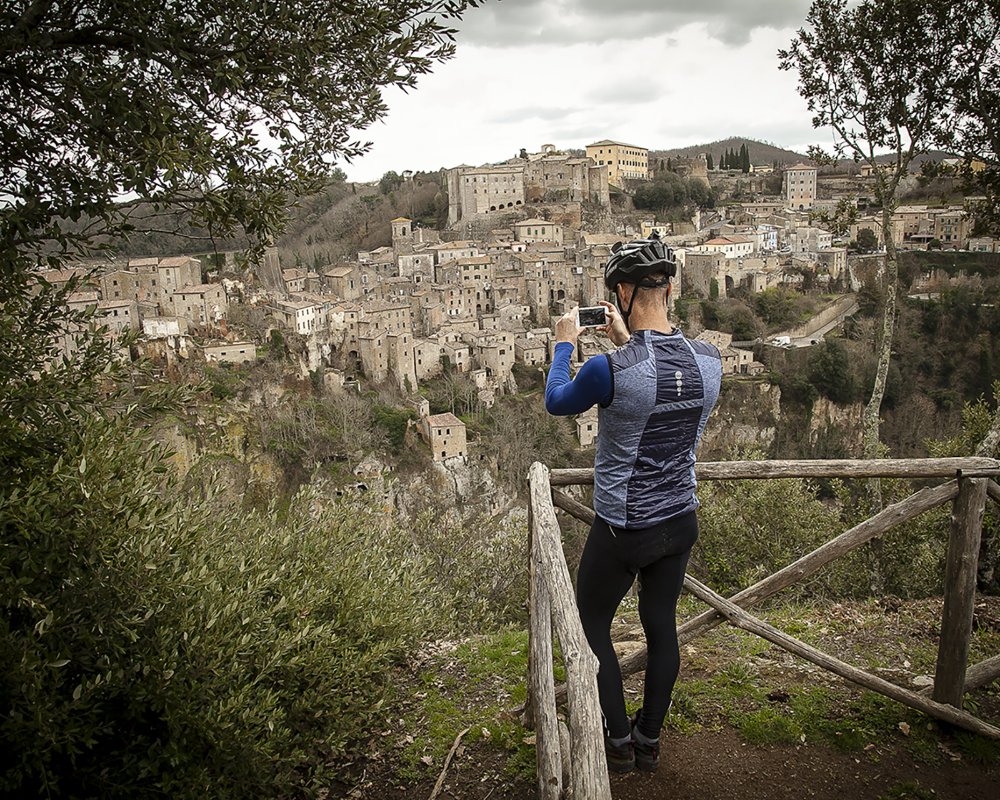Pitigliano and Sorano: a journey into the tuff civilization



Pitigliano and Sorano, villages perched on spurs of tuffaceous rock rising above wild gorges carved by the water of millennia-old streams. These are places that tell of archaic civilizations and noble comital families, from the Aldobrandeschi to the Orsini, from the Medici to the Lorraine. Tuff rock is the element that characterizes this area of the Maremma around Grosseto, a borderland between Tuscany and Lazio.
Passing through the beautiful rusticated gate surmounted by the coat of arms of "Gianfrancesco Orsino Conte di Pitigliano AD 1545," we leave the Historic Town Center of Pitigliano, leaving behind one of the most beautiful and disputed villages in Italy, as evidenced by the many historic buildings enclosed in the ancient citadel, among which the Fortezza Orsini stands out. Following Regional Road 74 southward, we descend a first hairpin bend carved into the tuff. At the second hairpin bend we exit by the tangent, leaving Regional Road 74 for the provincial road Pian della Madonna (Provincial Road 46), which continues, still downhill, crossing the Lente River. An initial climb, which continues on the Valle Morta S. Pietro Road, warms our legs before we let the bike slide on the plateau overlooking the river basin. In a succession of short and sometimes steep ups and downs, we arrive under the imposing tuffaceous rock that overlooks the ruins of the Rocca Aldobrandesca of Sovana. The next ascent to the village is a sort of leap back in time. We reach Piazza del Pretorio, the San Mamiliano Museum and the Church of Santa Maria which preserves, inside, the famous pre-Romanesque ciborium.
Back on our bikes again, we leave the ancient walls of Sovana to reach the archaeological area "Città del Tufo" (City of the Tuff), with the monumental Etruscan tombs, including the famous Ildebranda Tomb. We get there by making a short loop, between the Provincial Road 145 of Montebuono and the RET (Rete Escursionistica Toscana – Excursion Network Tuscany) 002 trail, which allows us to bike along the quarry road known as the Cavone. We then climb to Provincial Road 22, passing past Sovana in the direction of Sorano until the junction with Provincial Road 46 Pian della Madonna. Just before the junction, at the edge of the roadway, a curious boulder with the appearance of a large stone hand arouses our curiosity. It is "the hand of Orlando." Legend has it that Charlemagne, king of the Franks, asked Orlando for help in conquering the city of Sovana. The hero arrived with his white horse, certain of victory. Instead, the town managed to hold out, and the Frenchman's attacks were to no avail, and, grief-stricken by his defeat, he knelt before a boulder to pray so emphatically that the shape of his hand was left imprinted in the tuff.
At the junction with Provincial Road 46 we follow the signs RET 005 Sovana - Sorano. More ups and downs, this time on a gravel surface, alternate between tuff walls overhanging ancient fossils. Once we are banck on the tarmac of Provincial Road 22 we follow it, ignoring both the junction with Provincial Road 34 Selvena and the next with Provincial Road 98 Casa Rocchi, until the road begins to descend sharply taking us into the deep valley of the Lente. An incredible series of hairpin bends carved into the tuff leads us into the town of Sorano dominated by the Masso Leopoldino and the mighty Fortezza Orsini. Sorano's centuries-old alleys are well worth a thorough visit.
We set off again following the San Quirico provincial road (Provincial Road 12): evocative dirt roads furrow the countryside among pastures and ancient farms with lava stone walls. Leaving Provincial Road 12 behind, we follow its tracks until we cross Provincial Road 4 Pitigliano - S. Fiora in the vicinity of the Pieve di Santa Maria dell'Aquila. The Romanesque-style church stands near a hot spring that is now part of the Terme di Sorano complex. Once on the paved road, we follow the Provincial Road 4 slightly downhill until we reach Pitigliano.